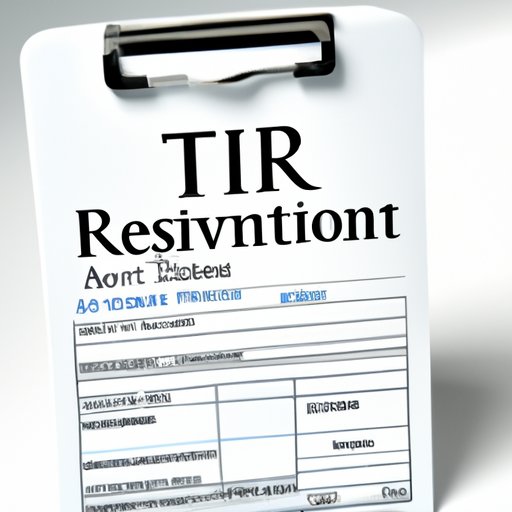Introduction
Starting a business from home can be a great way to pursue your entrepreneurial dreams and achieve financial freedom. If you have a great business idea and are ready to take the next step, there is a lot to consider. Knowing the necessary steps to get your business off the ground can help ensure that you’re successful in the long run.
This article provides a comprehensive guide to starting a business from home. We’ll discuss how to research your idea, find financing resources, choose a legal structure, register your business, set up accounting and record keeping systems, invest in technology, and develop an online presence.

Research Your Idea: Understand the Market and Create a Business Plan
Before you launch your business, it’s important to do some research and create a business plan. This will help you understand the market for your product or service and identify potential opportunities and challenges.
Identifying Your Target Market
The first step is to identify your target market. Who are the people that are most likely to purchase your product or service? You should research the demographics of this group, such as age, gender, income level, location, and interests. This information can help you tailor your product or service to meet their needs.
Analyzing Competitors
Next, you should analyze your competitors. Who else is offering a similar product or service? What are they doing well and where could they improve? Understanding your competitors can help you determine how to differentiate yourself in the market.
Crafting a Business Plan
Once you’ve identified your target market and analyzed your competitors, you should create a business plan. This document should include an executive summary, company description, market analysis, competitive analysis, marketing strategy, operations plan, and financial projections. Creating a comprehensive business plan can help you stay organized and focused as you move forward with launching your business.
Find Financing Resources: Look Into Startup Loans, Grants, and Crowdfunding
Once you’ve done your research and created a business plan, you’ll need to secure funding for your business. There are several options available, including startup loans, grants, and crowdfunding.
Exploring Loan Options
Startup loans are one of the most popular funding sources for small businesses. You can apply for a loan from a bank, credit union, or online lender. The amount you can borrow and the interest rate will depend on your credit score and financial history.
Looking Into Grants
Grants are another option for financing your business. These funds are typically provided by government agencies, nonprofits, or other organizations. Grant applications are usually competitive, so you’ll need to make sure your business stands out.
Investigating Crowdfunding Opportunities
Crowdfunding is a great option for entrepreneurs looking to raise money for their business. You can create a campaign on a crowdfunding platform, such as Kickstarter or Indiegogo, and set a goal for how much money you want to raise. People who support your campaign can donate money to help you reach your goal.
Choose a Legal Structure: Decide What Kind of Entity You’ll Be
Choosing a legal structure for your business is an important decision. It will determine how you pay taxes, how much personal liability you’ll have, and other factors. You should consult with an attorney or accountant to make sure you select the right structure for your business.
Types of Entities
Common types of entities include sole proprietorships, partnerships, limited liability companies (LLCs), S corporations, and C corporations. Each has its own advantages and disadvantages, so it’s important to understand the differences before making a decision.
Pros and Cons of Different Structures
Sole proprietorships are the simplest form of business entity and offer the most flexibility. However, you’ll be personally liable for any debts or lawsuits against the business. Partnerships allow two or more people to share ownership of a business, but all partners are personally liable for any debts or lawsuits. LLCs provide the most protection from personal liability, but they require more paperwork and have more restrictions on ownership.

Register Your Business: Get a Tax ID and File for Licenses and Permits
Once you’ve chosen a legal structure, you’ll need to register your business with the state. This involves getting a tax identification number and filing for licenses and permits. Depending on the type of business you’re running, you may also need to register with the federal government.
Obtaining a Tax ID
You’ll need to obtain a tax identification number from the IRS. This will be used to file taxes and open a business bank account. You can apply for a tax ID online or by mail.
Filing for Licenses and Permits
You may also need to file for licenses and permits depending on the type of business you’re running. This could include a business license, health department permit, or zoning permit. Check with your local government to find out what is required.
Set Up Accounting and Record Keeping Systems
Setting up accounting and record keeping systems is essential for any business. This will help you track your income and expenses, create financial statements, and prepare for tax season.
Choosing an Accounting System
The first step is to choose an accounting system that works for your business. This could be an online software program, spreadsheet, or manual system. Make sure you understand all the features and capabilities of the system before you commit.
Setting Up Record Keeping Systems
In addition to an accounting system, you’ll also need to set up record keeping systems. This includes creating folders for invoices, receipts, contracts, and other documents. You should also back up all important files in case of an emergency.

Invest in Technology: Choose and Install the Right Software
Technology can help streamline many aspects of running a business. Investing in the right software can save you time and money in the long run.
Evaluating Software Needs
Before you start shopping for software, take some time to evaluate your needs. Think about the tasks you need to accomplish and the features that would be helpful. This will help you narrow down your search and make sure you get the right software for your business.
Selecting the Right Software
Once you know what you need, you can start looking for the right software. Read reviews and compare features to make sure you select the best option for your business. Take advantage of free trials to make sure the software meets your expectations.
Installing the Software
Once you’ve selected the software, you’ll need to install it. Follow the instructions carefully to make sure the software is set up correctly. If you have any questions, contact the software provider for assistance.
Develop an Online Presence: Create a Website and Social Media Profiles
Creating an online presence is essential for any business. Developing a website and social media profiles can help you reach more customers and build your brand.
Building a Website
Creating a website is the best way to establish your online presence. You can use a website builder to design a professional-looking site without needing to know any coding. Once your site is up and running, make sure to keep it updated with fresh content.
Creating Social Media Profiles
Social media is a great way to connect with customers and promote your business. Create profiles on the major platforms, such as Facebook, Twitter, and Instagram. Post regularly and engage with your followers to build relationships and increase visibility.
Conclusion
Starting a business from home can be a great way to pursue your entrepreneurial dreams. This comprehensive guide walks you through the process of researching your idea, finding financing resources, choosing a legal structure, registering your business, setting up accounting and record keeping systems, investing in technology, and developing an online presence. With the right planning and preparation, you can successfully launch your business and achieve success.
Summary of Key Points
Starting a business from home requires research, planning, and preparation. You should research your idea, create a business plan, explore financing resources, choose a legal structure, register your business, set up accounting and record keeping systems, invest in technology, and develop an online presence.
Call to Action
If you’re ready to start your own business from home, now is the perfect time to get started. Use this guide as a roadmap to help you navigate the process and ensure that your business is successful.
(Note: Is this article not meeting your expectations? Do you have knowledge or insights to share? Unlock new opportunities and expand your reach by joining our authors team. Click Registration to join us and share your expertise with our readers.)
